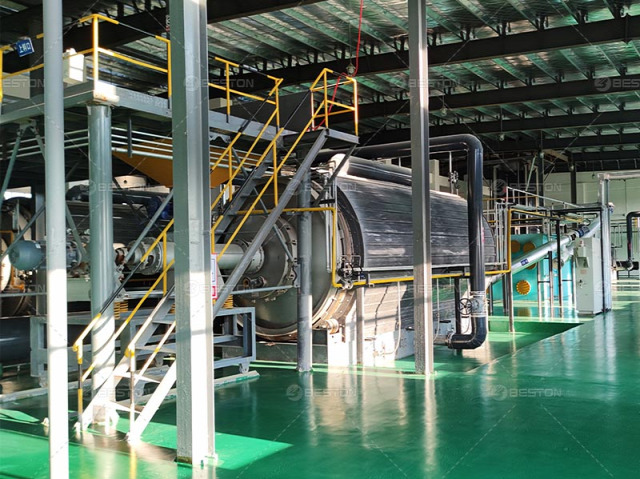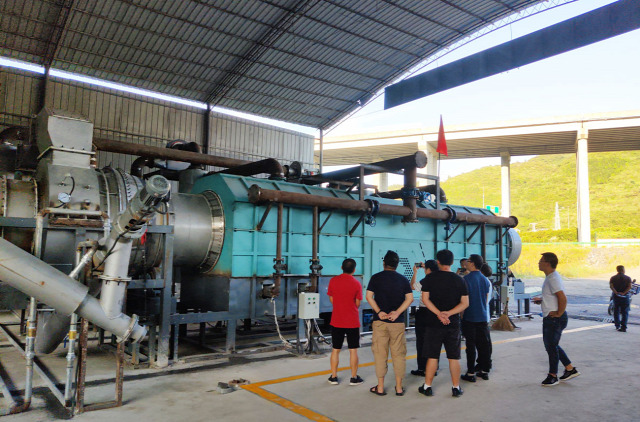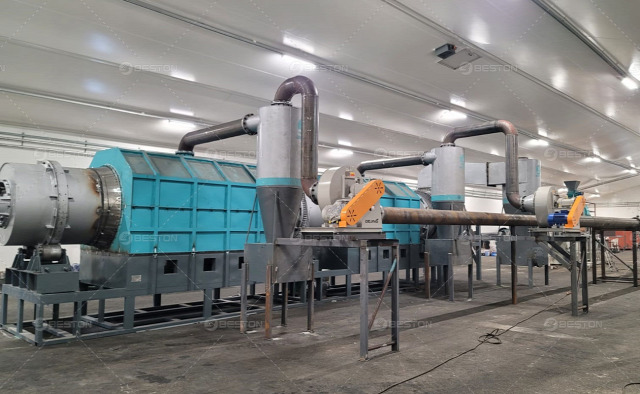The transformation of plastics into alternative fuels represents a pivotal development in the quest for sustainable energy solutions. This process not only addresses environmental concerns related to plastic waste but also offers significant economic benefits. Central to this transformation is the use of a plastic to fuel machine, which plays a crucial role in converting waste plastics into valuable energy resources. This article explores the economic advantages of implementing such projects, highlighting their impact on cost savings, job creation, resource efficiency, and energy security.
Cost Savings and Efficiency
1. Reduction in Waste Management Costs
One of the most immediate economic benefits of plastics to alternative fuels projects is the reduction in waste management costs. Traditional disposal methods for plastics, such as landfilling and incineration, can be expensive and environmentally detrimental. By converting plastic waste into fuel using a plastic to fuel machine for sale, businesses and municipalities can significantly cut down on waste disposal costs. This process not only reduces the volume of waste that needs to be managed but also mitigates the costs associated with landfill space and incineration facilities.
2. Decreased Dependence on Fossil Fuels
The conversion of plastics into alternative fuels provides a viable substitute for fossil fuels. Utilizing these alternative fuels can lead to substantial cost savings in energy expenses. Fossil fuels, subject to volatile market prices and geopolitical tensions, often entail significant financial risks. By leveraging alternative fuels derived from plastics, industries can stabilize their energy costs and reduce their exposure to the fluctuations of global fuel markets. This shift also promotes energy independence, lessening the economic impact of import dependencies.
3. Enhanced Resource Efficiency
Plastics to alternative fuels projects enhance resource efficiency by ensuring that plastic waste is repurposed rather than discarded. This approach maximizes the value derived from plastic materials, which would otherwise contribute to environmental pollution. The efficient use of resources through a plastic to fuel machine means that less new raw material is needed to produce energy, thus conserving natural resources and reducing the environmental footprint. This efficiency translates into cost savings for businesses and economies at large, as it reduces the need for raw material extraction and processing.
Job Creation and Economic Growth
1. Creation of New Employment Opportunities
The establishment and operation of plastics to alternative fuels facilities generate a range of employment opportunities. These projects require skilled labor for the operation and maintenance of plastic to fuel machines, as well as for the collection and preprocessing of plastic waste. Jobs created in these facilities span various sectors, including engineering, manufacturing, logistics, and environmental management. By fostering job creation, these projects contribute to local economies and support community development.
2. Stimulation of Local Economies
Plastics to alternative fuels projects stimulate local economies by promoting economic activity in areas that are often economically disadvantaged. These projects can attract investments and drive economic growth in regions where waste management and energy production are critical concerns. The development of such facilities often leads to increased demand for local services, including transportation, construction, and waste management, thereby boosting the economic vitality of the surrounding area.
3. Support for Innovation and Technological Advancement
The implementation of plastic to fuel machines encourages innovation and technological advancement in the field of waste-to-energy conversion. As the technology evolves, it can lead to the development of more efficient and cost-effective processes for converting plastics into fuel. This technological progress can have broader economic benefits by spurring additional research and development activities, enhancing the competitiveness of the local industry, and positioning regions as leaders in sustainable technology.

Environmental and Health Benefits
1. Mitigation of Environmental Costs
The environmental benefits of plastics to alternative fuels projects are closely linked to their economic advantages. By converting plastic waste into fuel, these projects help to alleviate the environmental costs associated with plastic pollution. Reducing the accumulation of plastic waste in landfills and oceans minimizes the negative impact on ecosystems and wildlife. This environmental mitigation can result in long-term economic benefits by avoiding the high costs associated with environmental remediation and healthcare costs related to pollution.
2. Improved Public Health Outcomes
Plastic waste and its improper disposal can pose significant health risks, including air and water pollution. By addressing these issues through the conversion of plastics into fuel, these projects contribute to improved public health outcomes. Reducing the amount of plastic waste that ends up in landfills or incinerators decreases the release of harmful pollutants into the environment. This, in turn, reduces the healthcare costs associated with pollution-related illnesses, providing additional economic benefits to communities.
Market and Industry Opportunities
1. Expansion of Alternative Fuel Markets
The production of alternative fuels from plastics creates new market opportunities within the energy sector. As the demand for sustainable and renewable energy sources grows, alternative fuels derived from plastics can play a significant role in meeting this demand. The development of a plastic pyrolysis machine for sale supports the growth of this market, offering a competitive edge to businesses involved in alternative fuel production. This market expansion can lead to increased revenue and profitability for companies that invest in these technologies.
2. Diversification of Energy Sources
Diversifying energy sources is crucial for enhancing energy security and reducing reliance on traditional fossil fuels. Plastics to alternative fuels projects contribute to this diversification by providing a renewable and locally sourced energy option. This diversification not only supports energy security but also enhances the resilience of energy systems against supply disruptions and price volatility. By incorporating alternative fuels into the energy mix, businesses and economies can achieve greater stability and sustainability.
3. Enhancement of Corporate Sustainability
Investing in plastics to alternative fuels projects aligns with corporate sustainability goals and enhances a company's environmental and social responsibility profile. Companies that adopt these technologies demonstrate their commitment to reducing waste and promoting sustainable practices. This commitment can improve their reputation, attract environmentally conscious customers, and meet regulatory requirements related to waste management and emissions. The positive impact on corporate sustainability can translate into financial benefits through increased market share and customer loyalty.
Conclusion
The economic benefits of plastics to alternative fuels projects are substantial and multifaceted. By reducing waste management costs, decreasing dependence on fossil fuels, and enhancing resource efficiency, these projects provide significant financial advantages. Additionally, the creation of new employment opportunities, stimulation of local economies, and support for technological innovation contribute to broader economic growth. The environmental and health benefits further enhance the economic case for these projects by mitigating environmental costs and improving public health outcomes. As the demand for sustainable energy solutions continues to rise, plastics to alternative fuels projects offer a promising pathway to economic and environmental sustainability.







 Traditional Practices:
Traditional Practices: